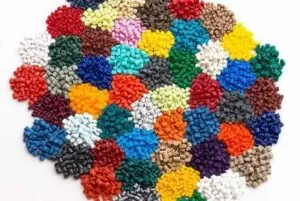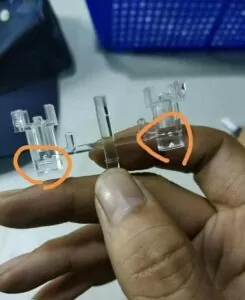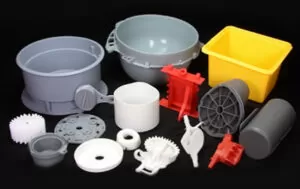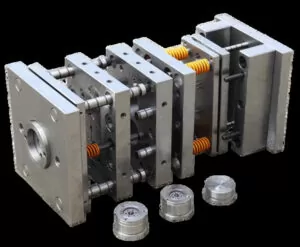Polyphenylene ether (PPO) is one of the five general-purpose engineering plastics in the world.
It has the advantages of high rigidity, high heat resistance, flame retardant, high strength, and excellent electrical properties. In addition, PPO also has the advantages of wear resistance, non-toxicity, and pollution resistance.

Basic properties of PPO
1. It is white particles. Good overall performance can be used in steam at 120 degrees, with good electrical insulation, and small water absorption, but tends to stress cracking. Modified polyphenylene ether eliminates stress cracking.
2. It has outstanding electrical insulation and excellent water resistance, good wear resistance and electrical properties, and good dimensional stability. Its dielectric properties rank first among plastics.
3. MPPO is a modified material made by blending PPO and HIPS, and all the materials on the market are this kind of material.
4. It has high heat resistance, the glass transition temperature is 211 degrees, the melting point is 268 degrees, and it has a tendency to decompose when heated to 330 degrees.
The higher the PPO content, the better the heat resistance, and the heat distortion temperature can reach 190 degrees.
5. Good flame retardancy, self-breathing, and moderate flammability after mixing with HIPS. Lightweight, non-toxic, and can be used in the food and pharmaceutical industries. Poor light resistance, it will change color when used in the sun for a long time.
6. It can be blended and modified with ABS, HDPE, PPS, PA, HIPS, glass fiber, etc. PPO plastic raw material characteristics.

A. PPO plastic raw thermoplastic materials are non-toxic, transparent, low relative density, and have excellent mechanical strength, stress relaxation resistance, creep resistance, heat resistance, water resistance, water vapor resistance, and dimensional stability.
B. It has good electrical properties in a wide range of temperature and frequency variations, no hydrolysis, small shrinkage rate, flame retardant, and self-extinguishing, resistant to inorganic acids, alkalis, aromatic hydrocarbons, halogenated hydrocarbons, oils, etc. Poor performance, easy to swell or stress crack.
C. It has the advantages of high rigidity, high heat resistance, flame retardant, high strength, and excellent electrical properties.
D. Polybenzyl ether also has the advantages of wear resistance, non-toxicity, and pollution resistance.
E. The dielectric constant and dielectric loss of PPO plastic raw materials are one of the smallest varieties in engineering plastics.
They are almost not affected by temperature and humidity and can be used in low, medium, and high-frequency fields.
F. The load-deformation temperature of PPO can reach above 190°C, and the embrittlement temperature is -170°C.
G. The main disadvantage is poor melt fluidity and difficult processing and injection molding.

PPO injection molding process
(1) Amorphous material with low moisture absorption. The water absorption rate of PPO is very low, but moisture will cause defects such as silver threads and air bubbles on the surface of the product.
For this reason, the raw material can be placed in an oven at 80~100°C and dried for 1-2 hours use.
(2) The molecular bond of PPO is rigid, the glass transition temperature is high, and it is not easy to be oriented, but it is difficult to relax after forced orientation. Therefore, the residual internal stress in the product is relatively high, and it generally needs to be post-treated.
(3) PPO is an amorphous material, and its rheology in the molten state is close to Newtonian fluid, but the degree of deviation from Newtonian fluid increases with the increase in temperature.
(4) The viscosity of PPO melt is high, so the temperature should be increased during processing, and the injection pressure should be increased appropriately to improve the mold-filling ability.
(5) The returned material of PPO can be reused, generally reused 3 times, and its performance is not significantly reduced.
(6) The PPO melt should be formed by a screw injection molding machine, and the nozzle is preferably straight-through, with an aperture of 3-6mm
(7) When PPO is injection molded, it is advisable to adopt high-pressure and high-speed injection and the pressure holding and cooling time should not be too long.
(8) The main channel of the injection mold should adopt a larger taper or a pull hook, and the sprue should be short and thick.
(9) The gate should be direct, fan-shaped, or flat. When using a needle-shaped gate, the diameter should be appropriately increased. For long runners, a hot runner structure can be used.
(10) The molding shrinkage rate of PPO is small, generally 0.2% to 0.7%, so the dimensional stability of the product is excellent.
(11) Poor fluidity, similar to a Newtonian fluid, the viscosity is sensitive to temperature, and the uniform wall thickness of the product is generally above 0.8 mm. It is easily decomposed and produces corrosive gas when decomposed.
The molding heat deflection temperature should be strictly controlled, the injection mold should be heated, and the gating system should have small resistance to material flow.
(12) The water absorption rate of polyphenylene ether is very low, about 0.06%, but a small amount of moisture will cause silver threads and other roughness on the surface of the product.
It is best to dry it, and the temperature should not exceed 150 degrees, otherwise, the color will change.
(13) The molding temperature of polyphenylene ether is 280-330 degrees, and the molding temperature of modified polyphenylene ether is 260-285 degrees.
Melt temperature of PPO plastic raw material injection molding process: 270-290°C
Barrel constant temperature: PPO has high heat resistance, the thermal decomposition temperature reaches 350C, and there is no obvious thermal degradation phenomenon within 300°C.
Usually, the barrel temperature is controlled at 260~290°C, and the nozzle temperature is about 10°C lower than the barrel temperature.

Mold temperature: Due to the high viscosity of PPO melt, a higher mold temperature should be used during plastic injection molding. Usually, the mold temperature is controlled at 100~150°C.
When the mold temperature is lower than 100°C, thin-walled plastic parts are prone to insufficient filling and delamination; when it is higher than 150°C, defects such as air bubbles, silver threads, and warping are prone to occur.
Injection pressure: Increase the injection pressure, which is conducive to the filling of the molten material. Generally, the injection pressure is controlled at 100-140MPa.
Holding pressure: 40%-60% of injection pressure
Back pressure: 3-10 MPa (30-100bar)
Injection speed: Products with long flow paths require rapid injection; but in this case, ensure that the membrane is sufficiently ventilated.
Screw speed: medium screw speed, the equivalent linear speed is 0.6m/s
Measurement stroke: 0.5-3.5D
Residue amount: 3-6mm, depending on metering stroke and screw diameter.
Pre-drying: Dry at 110°C for 2 hours.
Recycling rate: The material can be reprocessed as long as the regrind is not thermally degraded.
Shrinkage rate: 0.8%-1.5%
Gate system: use a point or latent gate for small products, otherwise use a straight gate or wafer gate; use a hot runner machine to shut down the heating system during the shutdown period; operate several metering cycles under the back pressure of the bottom screw, and empty the barrel as you would an extruder.
Barrel equipment: standard screw, non-return ring, straight nozzle.

PPO Application field
Pure PPO material has the disadvantages of poor melt fluidity and high price. The products sold in the market are all improved products with excellent comprehensive performance.
They are widely used in:
Electronics
It can meet the requirements of excellent electrical insulation under the conditions of humidity, load, and high temperature. It can be used to prepare tuners, coil cores, microwave insulators, shielding sleeves, high-frequency printed circuit boards, various high-voltage electronic components, and televisions. machines, computers, fax machines, copiers, etc.
Auto industry
Ideal for instrument panel parts, window frames, shock absorbers, pump screens, and more.
Mechanical Engineering
Used as gears, bearings, pump impellers, blower impeller blades, etc.
Chemical field
Used to make corrosion-resistant parts such as pipes, valves, filters, and submersible pumps.

The performance of PPO determines its application field and scope of use:
(1) MPPO has a low density, is easy to process, and has a heat distortion temperature of 90 ~ 175°C. There are products of different specifications and good dimensional stability.
It is suitable for injection molding manufacturing office equipment, household appliances, computers, and other cabinets, chassis, and precision components.
(2) MPPO has the lowest dielectric constant and dielectric loss tangent among the five general-purpose engineering plastics, that is, it has the best insulation and good heat resistance, and is suitable for the electrical industry.
It is suitable for making electrical components insulating parts used in wet and loaded conditions, such as coil bobbins, tube sockets, control shafts, transformer shielding sleeves, relay boxes, insulating posts, etc.
(3) MPPO has good water resistance and hot water resistance and is suitable for manufacturing water meters and water pumps.
The bobbins used in textile mills need to be resistant to cooking, and the bobbins made of MPPO have a long service life.
(4) The dielectric constant and dielectric loss tangent of MPPO are not affected by temperature and cycle number among engineering plastics, and it has good heat resistance and dimensional stability, which is suitable for the electronics industry.
(5) Due to the development of the electronics industry and the communication industry, mobile phones, portable computers, high-performance cameras, video cameras, etc. all need lithium-ion batteries, so the lithium-ion battery market has great development prospects.
The packaging materials for organic electrolytes for lithium-ion batteries used to be ABS or PC, MPPO for batteries was developed abroad in 2013, and its performance is better than the former two.
(6) MPPO has a wide range of uses in the automotive industry, such as instrument panels, protective bars, etc. PPO and PA alloys, especially those with high impact resistance specifications, are developing rapidly for exterior parts.
(7) In the chemical industry, modified polyphenylene ether can be used to manufacture corrosion-resistant equipment.
Its hydrolysis resistance is particularly good, and it is also acid-resistant, alkali-resistant, and soluble in aromatic hydrocarbons and chlorinated hydrocarbons.
(8) For medical equipment, it can replace stainless steel and other metals in hot water storage tanks and exhaust fan mixing filling valves.






